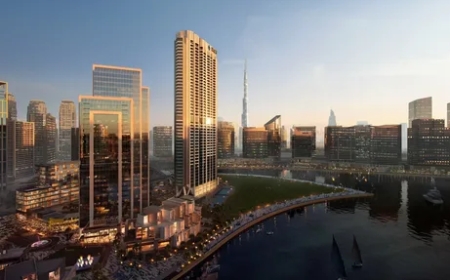Navigating Challenges in Industrial Property Management with Strategic Solutions
As demand surges for industrial properties for sale, especially with the growth of e-commerce and logistics, property managers are pressed to refine their strategies amidst growing challenges.

The Complex World of Industrial Property Management
Managing industrial properties is more than just collecting rent. Its about orchestrating operations, maintaining functionality, staying ahead of compliance regulations, and adapting to economic shifts. As demand surges for industrial properties for sale, especially with the growth of e-commerce and logistics, property managers are pressed to refine their strategies amidst growing challenges.
Challenge #1 Rising Operational Costs
Energy and Maintenance as Financial Drains
Industrial buildings often require significant energy and maintenance investments. According to the U.S. Energy Information Administration, the average commercial property spends over 30% of its energy usage on heating and cooling alone. This is magnified in industrial zones, where warehousing and manufacturing need 24/7 utilities.
Strategic Solution: Implement smart building technologies. IoT-driven energy management systems can reduce power usage by up to 20%, and predictive maintenance software minimizes downtime and repair expenses.
Challenge #2 Compliance with Safety and Environmental Regulations
Staying Ahead of Shifting Codes
Industrial zones are heavily regulated due to their environmental impact and operational risks. Non-compliance can lead to penalties or shutdowns. The EPA reported that over 40% of industrial properties audited in 2023 were found to have violations.
Strategic Solution: Engage environmental consultants regularly and digitize your compliance monitoring. Real-time tracking of air quality, noise levels, and emissions ensures you're not caught off guard by new regulations.
Challenge #3 Vacancies and Tenant Turnover
Keeping Occupancy Rates High
A critical pain point for property owners is tenant retention. The National Association of Realtors (NAR) reported an average 10% vacancy rate in industrial zones in 2023, especially in older facilities.
Strategic Solution: Offer customized lease packages, flexible square footage, and upgrade facilities with modern amenities like high-speed connectivity, advanced security systems, and sustainable infrastructure. This not only attracts long-term tenants but increases the asset value of your industrial property management.
Challenge #4 Adapting to Market Trends
The Rise of Urban Logistics
E-commerce giants and third-party logistics firms are seeking distribution hubs closer to city centers, driving a shift in traditional industrial real estate dynamics. Urban warehouses are becoming hot commodities.
Strategic Solution: Invest in mixed-use or last-mile delivery properties. Repositioning older facilities into urban distribution centers can drastically increase profitability. According to JLL Research, last-mile facilities command 30% higher rental rates than standard warehouses.
Future-Proofing with Technology and Insight
Incorporating PropTech innovations like AI-driven space utilization tools, drones for facility inspection, and AR for virtual walkthroughs positions your industrial property for the future. Real-time analytics can transform decision-making for property managers, helping them remain proactive rather than reactive.
Conclusion
The journey of managing industrial real estate may be filled with hurdles, but strategic foresight and innovation offer a clear roadmap forward. With a rising demand for industrial properties for sale, owners and managers who adapt with resilience and data-backed strategies will find not just survival but exponential growth in this evolving landscape.
Whether youre overseeing sprawling logistics centers or seeking to revamp aging factories, the right approach can turn your property into a prime industrial asset ready for tomorrows demands.





















